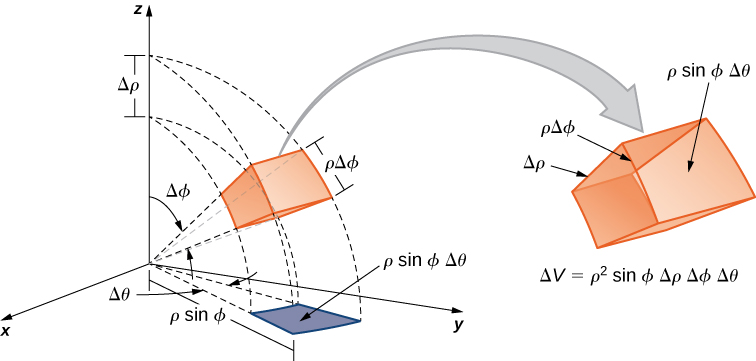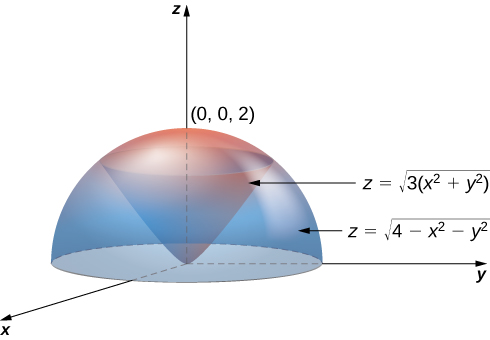| << Chapter < Page | Chapter >> Page > |
Now we can illustrate the following theorem for triple integrals in spherical coordinates with being any sample point in the spherical subbox For the volume element of the subbox in spherical coordinates, we have as shown in the following figure.

The triple integral in spherical coordinates is the limit of a triple Riemann sum,
provided the limit exists.
As with the other multiple integrals we have examined, all the properties work similarly for a triple integral in the spherical coordinate system, and so do the iterated integrals. Fubini’s theorem takes the following form.
If is continuous on a spherical solid box then
This iterated integral may be replaced by other iterated integrals by integrating with respect to the three variables in other orders.
As stated before, spherical coordinate systems work well for solids that are symmetric around a point, such as spheres and cones. Let us look at some examples before we consider triple integrals in spherical coordinates on general spherical regions.
Evaluate the iterated triple integral
As before, in this case the variables in the iterated integral are actually independent of each other and hence we can integrate each piece and multiply:
The concept of triple integration in spherical coordinates can be extended to integration over a general solid, using the projections onto the coordinate planes. Note that and mean the increments in volume and area, respectively. The variables and are used as the variables for integration to express the integrals.
The triple integral of a continuous function over a general solid region
in where is the projection of onto the -plane, is
In particular, if then we have
Similar formulas occur for projections onto the other coordinate planes.
Set up an integral for the volume of the region bounded by the cone and the hemisphere (see the figure below).

Using the conversion formulas from rectangular coordinates to spherical coordinates, we have:
For the cone: or or or
For the sphere: or or or
Thus, the triple integral for the volume is
Set up a triple integral for the volume of the solid region bounded above by the sphere and bounded below by the cone

Notification Switch
Would you like to follow the 'Calculus volume 3' conversation and receive update notifications?